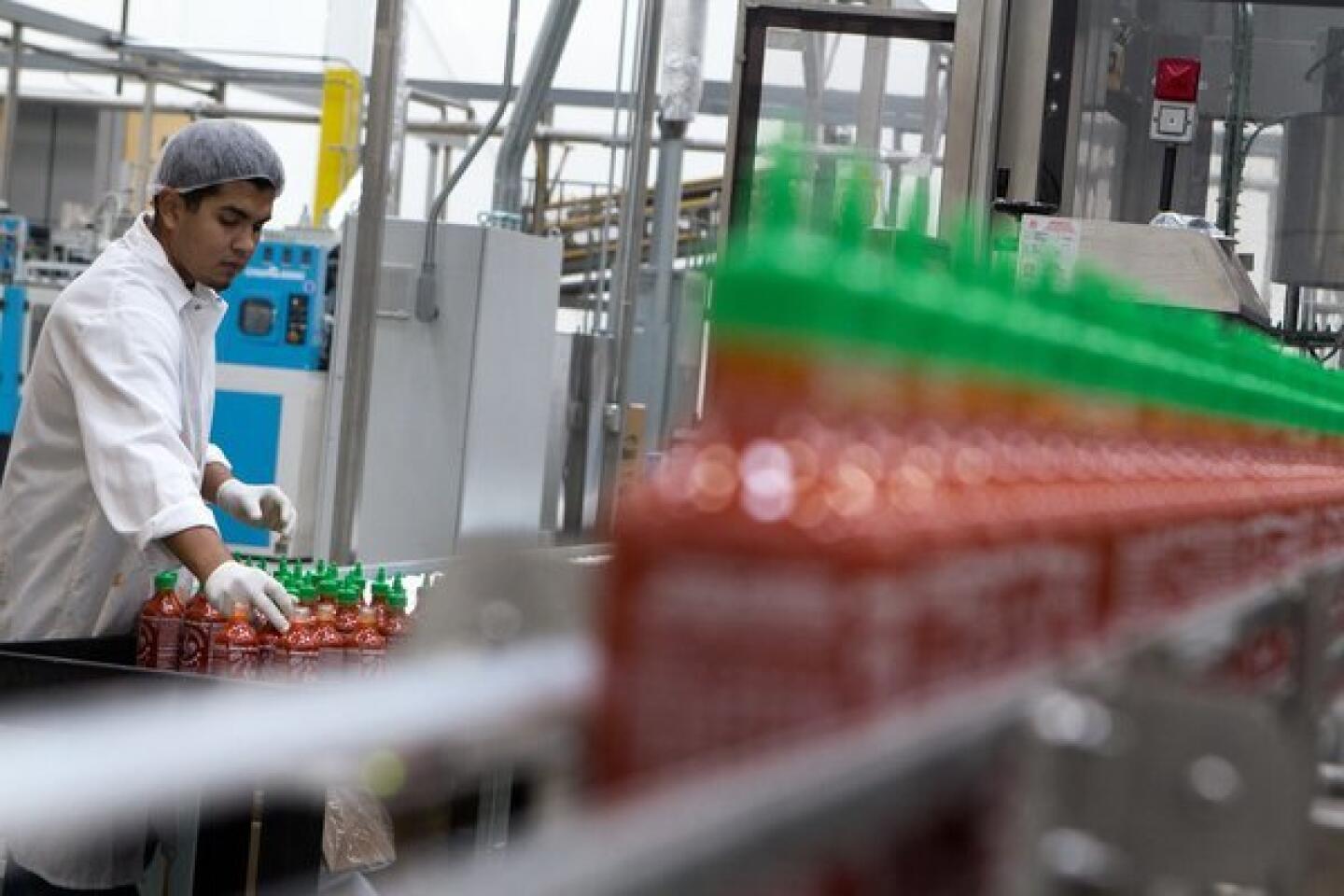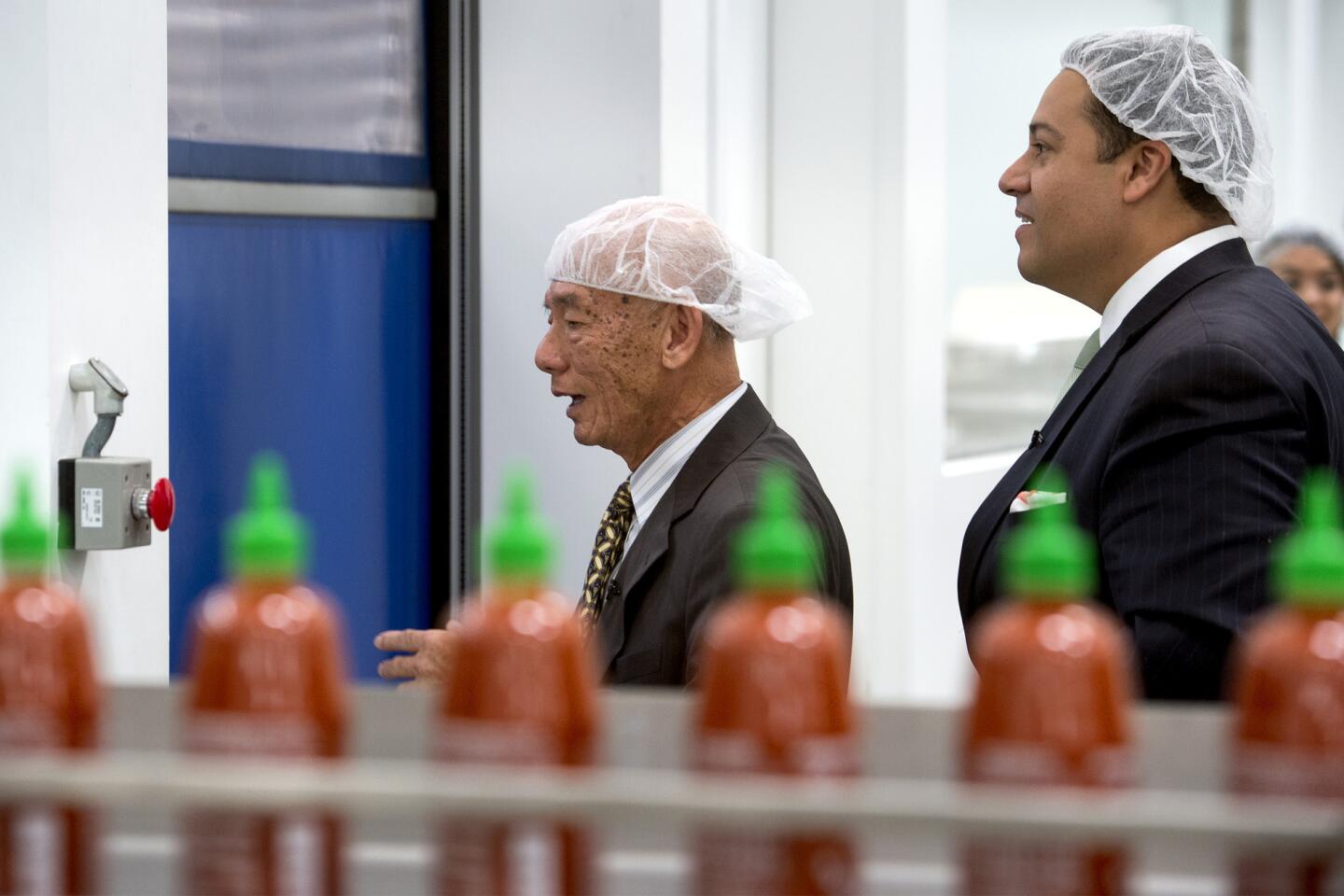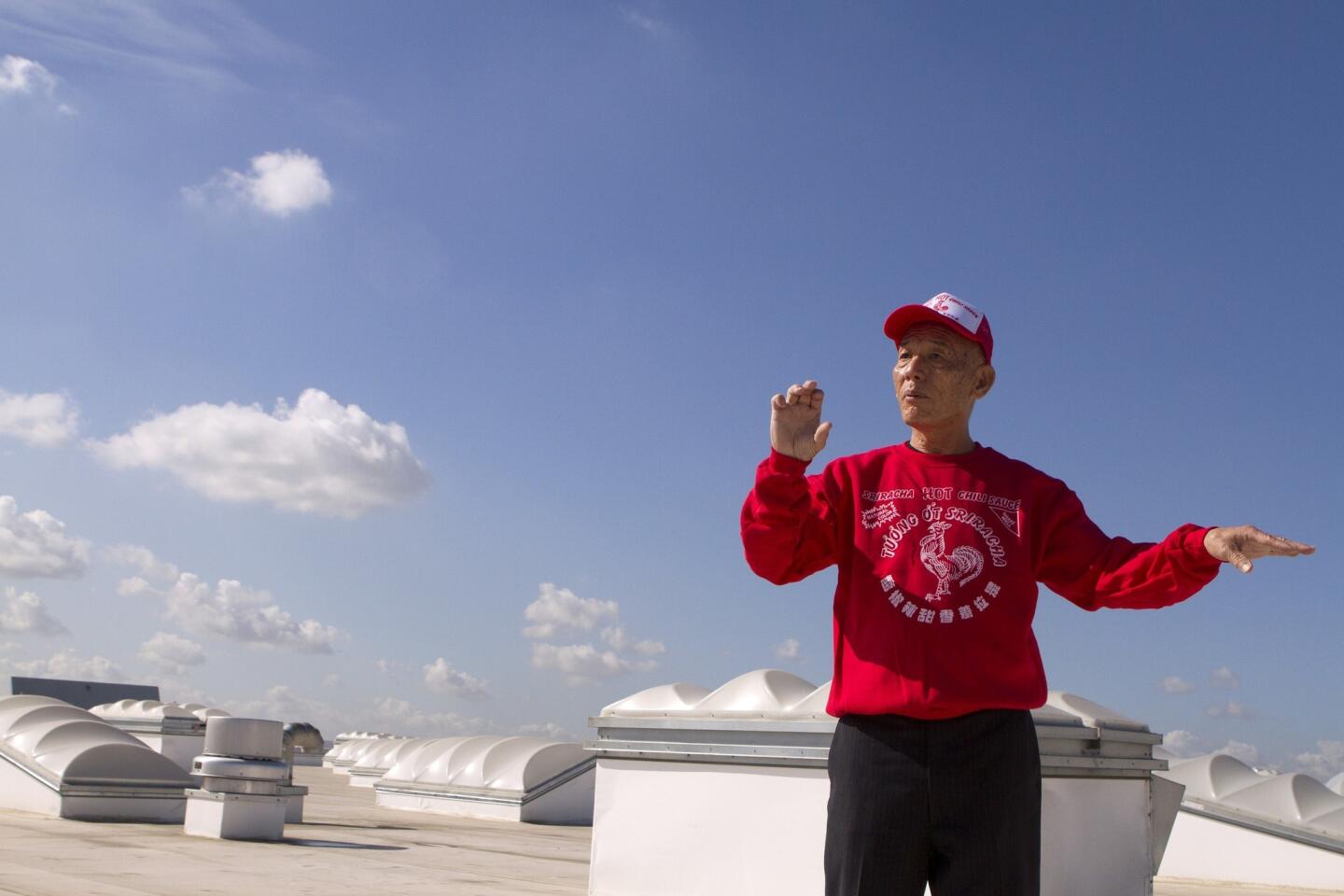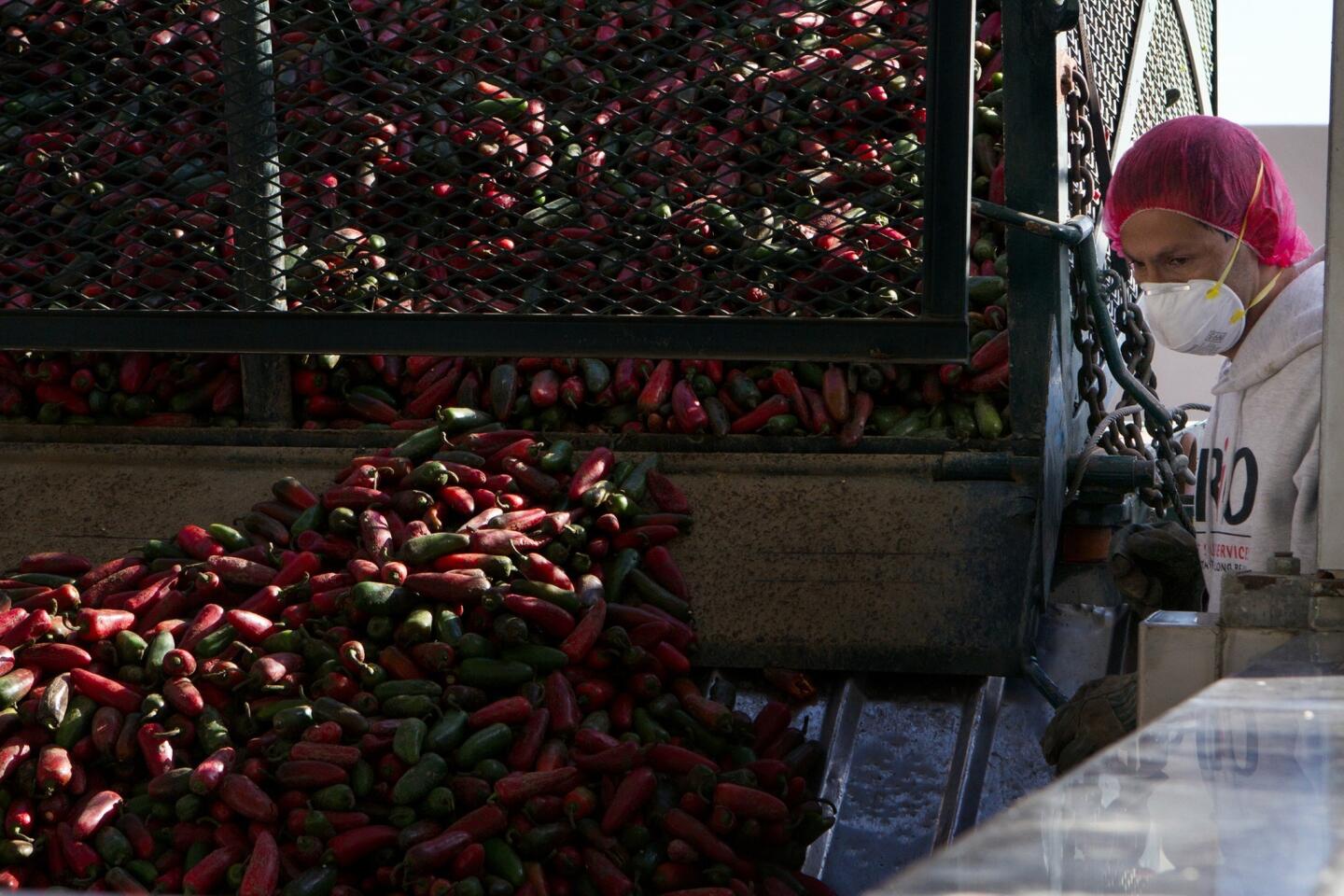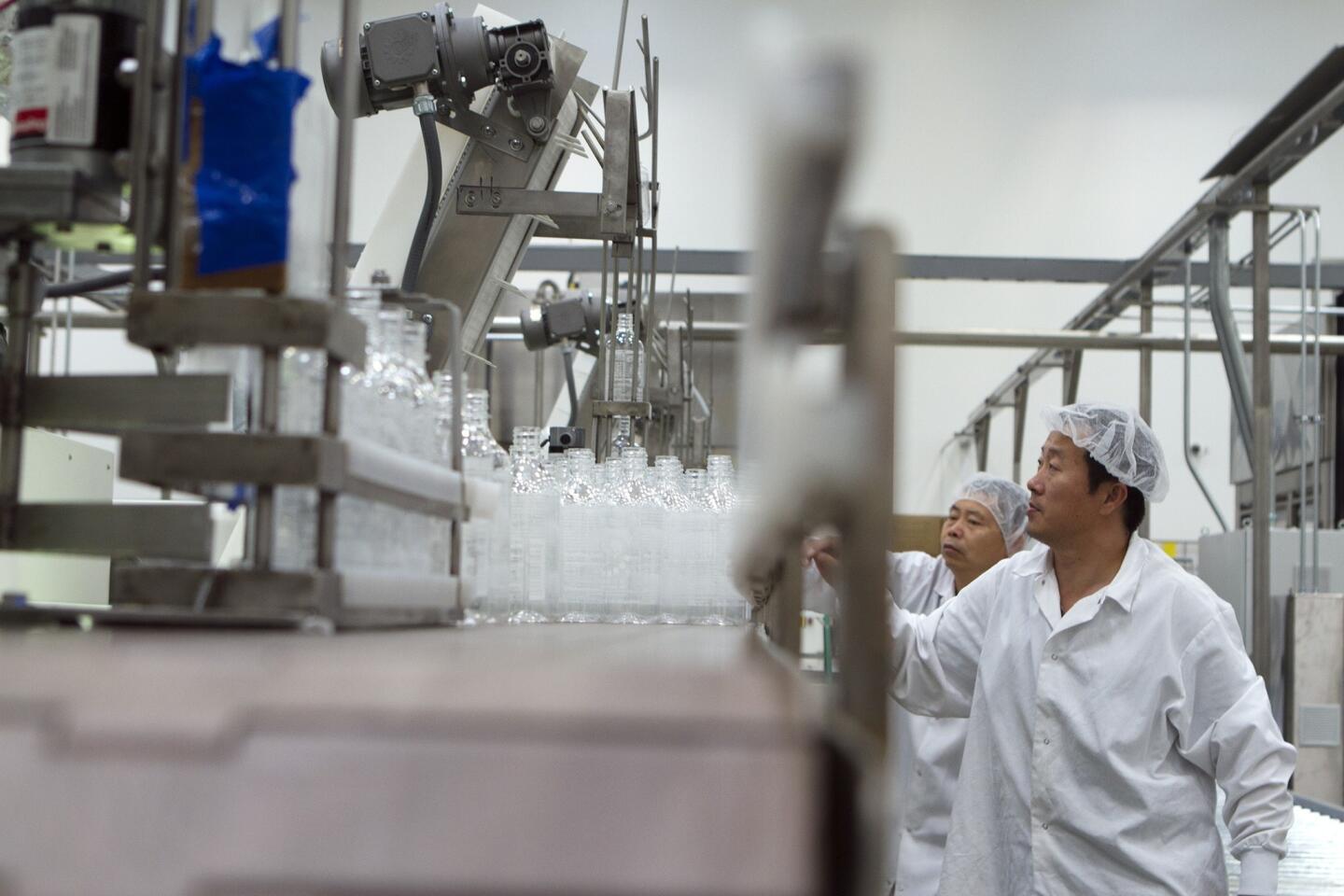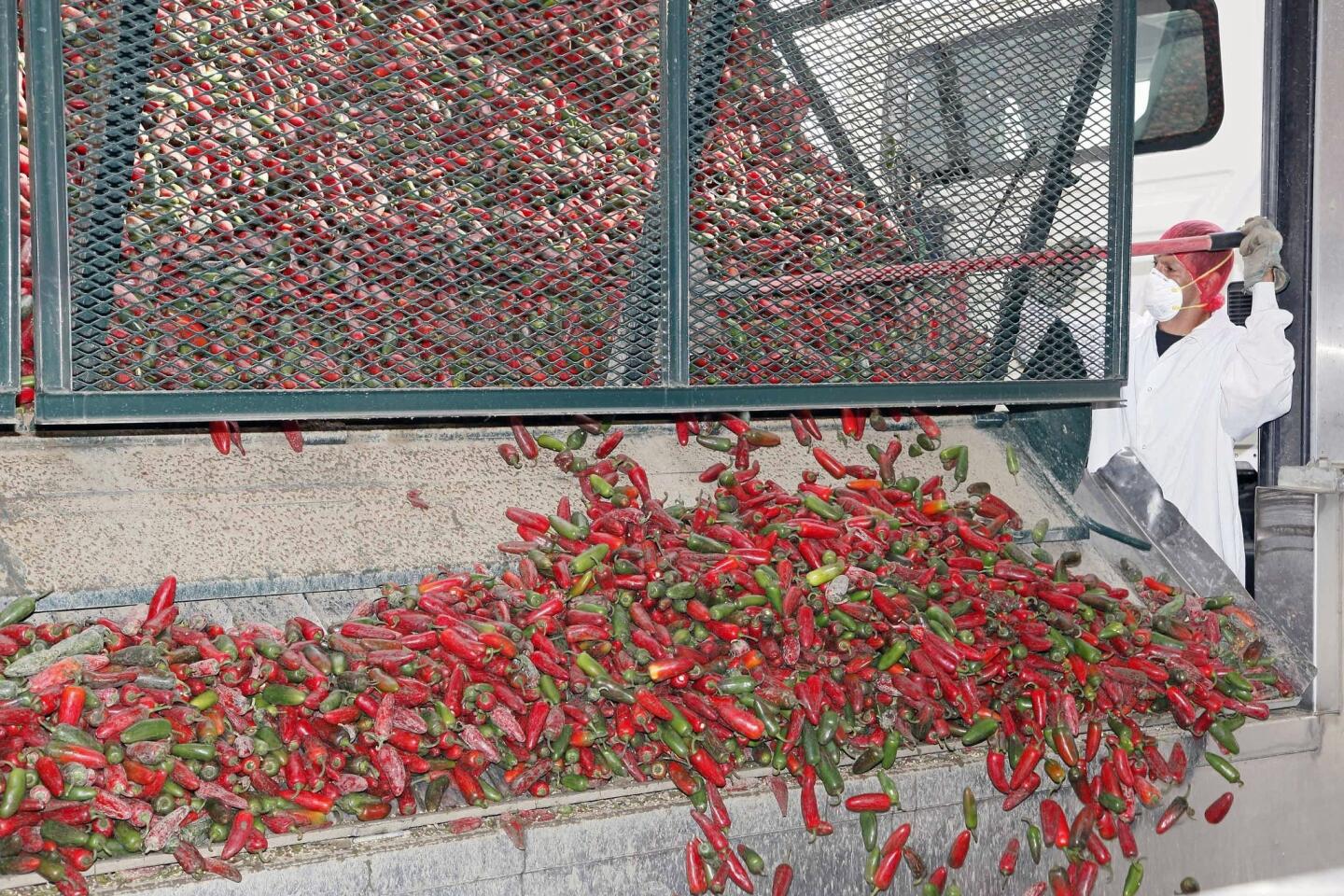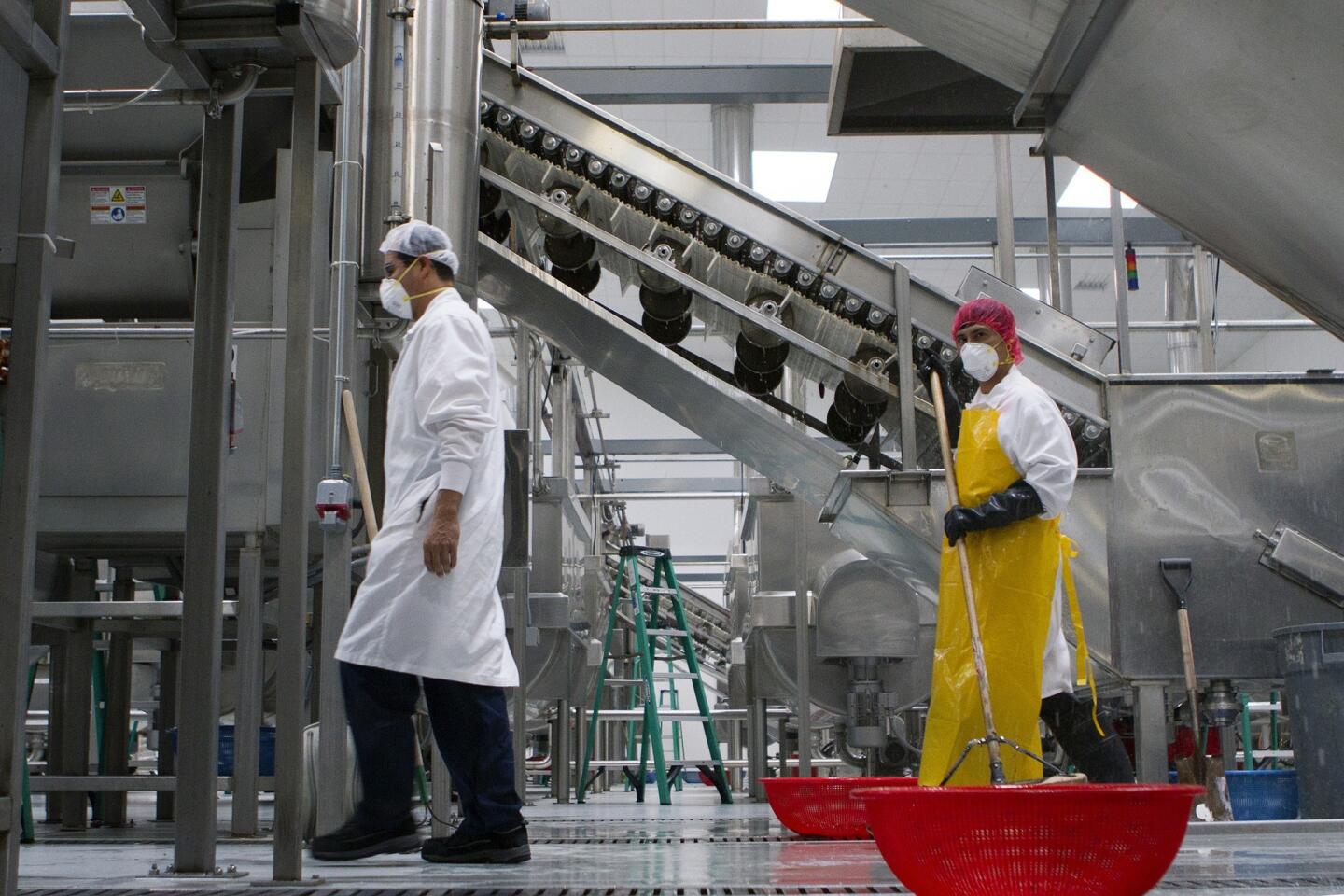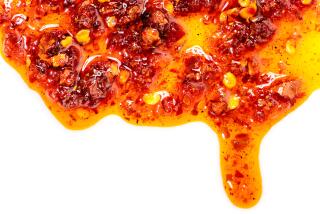Sriracha, despite its legal woes, is a cultural icon that bites
Hot sauce is so hot right now.
For the last few months, thanks to a daily Google alert for “Sriracha,” I’ve been treated to all manner of news about the fiery sweet-and-sour chili sauce that has become one of L.A.’s most famous exports, and a staple in every foodie home.
The links that flowed to my inbox attested to the exploding popularity of Sriracha, which had $60 million in sales last year and moved from Rosemead into a new 655,000-square-foot processing and bottling plant in Irwindale.
Websites were full of stories about new ways to consume Sriracha — in lollipops, in butter, on ice cream — and about new commercial partnerships, like a Sriracha-flavored Lay’s potato chip, a couple of Sriracha-flavored sandwiches from Subway.
In July, Buzzfeed explained how to throw a Sriracha-themed party.
The sauce is also the subject of a documentary by Griffin Hammond, who asked supporters for $5,000 on Kickstarter and ended up raising more than $20,000 to fund the film.
Last month, at the first-ever Los Angeles Sriracha Festival, Chief Executive David Tran, an immigrant from Vietnam who started his company, Huy Fong Foods Inc., in Chinatown 32 years ago, got the red-carpet treatment, with fans clamoring for photos and autographs.
The red sauce in the clear plastic bottle with that distinctive green cap has transcended its place on the condiment shelf and is well on its way to a permanent place in the popular culture.
This month, though, the news about Sriracha has been alarming: Some neighbors of the new Irwindale plant complained that fumes given off during the three-month chili processessing season, which began in September, made their eyes and throats burn. But plenty of neighbors told my colleague Frank Shyong that they not only were not bothered by the smells, they actually savored them. Nonetheless, Irwindale officials went to court to force a halt to production until the company came up with a satisfactory mitigation plan.
There’s nothing like impending scarcity to get foodies worked up; coverage of Sriracha’s woes led to speculation that there could be a shortage of the bright red sauce.
A Philadelphia lawmaker was so alarmed by the idea of a possible court-ordered Sriracha factory closure that he penned a funny mash note to Tran, offering 10 reasons why Huy Fong Foods should move to Philadelphia.
“Ever since we learned the global supply of your ambrosial Sriracha was in jeopardy due to a lawsuit filed by the City of Irwindale,” wrote Councilman James F. Kenney, “…we have been holding our collective breath. And believe me when I tell you we know how to hold your breath; after all, we are home to the Philadelphia Eagles.” (Also, Kenney wrote, the sauce goes great on cheese steaks.)
Turns out the worry was premature. Los Angeles Superior Court Judge Robert O’Brien denied Irwindale’s request to halt processing, and instead set a hearing for Nov. 22.
Something is definitely in the air about hot sauce, and it’s not just pesky fumes.
In the Nov. 4 issue of the New Yorker, staff writer Lauren Collins examined in delicious detail the subculture of “chiliheads” who compete to grow the world’s hottest chilis for the “gastromasochists” who crave the fruit, which gets its kick from the compound capsaicin.
For many years, the fearsome bhut jolokia, also known as “ghost pepper,” was considered the hottest chili on Earth, measuring a million Scoville heat units, or SHU.
In the last couple of years, Collins reports, growers have been able to exponentially increase the heat in newer strains of chilis with names like the Naga Viper, the Carolina Reaper and the Trinidad 7-pot (so named, she writes, because “one of them is enough to season seven pots of stew”), reaching SHUs of 2 million. (Sriracha is not really all that hot by comparison. According to Wikipedia, it measures between 1,000 and 2,500 SHUs, placing it on the heat scale between the mild banana pepper and the spicy Jalapeno.)
There’s no great mystery to the tormented relationship some of us have with hot food. As Collins puts it, “Because capsaicin causes the body to release endorphins, acting as a sort of neural fire hose, many people experience chilis as the ideal fulcrum of pain and pleasure.”
If you want to see what that looks like, check out the work of 29-year-old Kevin Strahle, a former sales rep for a beer distributor, whose YouTube video depicting him eating a ghost pepper has garnered nearly 6 million views. (“Tastes like a thousand burning needles in my mouth,” he says.)
Strahle, a nationally ranked competitive eater who lives in Santa Monica and goes by the nickname “L.A. Beast,” makes a modest living from his gastronomic gross-out videos, a number of which have gone viral. (His Crystal Pepsi video, a brief but memorable depiction of him drinking a 20-year-old bottle of the discontinued beverage, has 6.9 million views.)
Nearly half a million people have watched his “Sriracha challenge,” in which he downs three bottles in quick succession before experiencing what he and other competitive eaters call a “reversal of fortune.” If you can’t picture what that is, you can watch it here.
“People just like to watch other people eating chili peppers,” Strahle told me Sunday. “Someone wanted me to drink Tabasco, but I was like, hey, I will one-up that and drink Sriracha. I had it for the first time a few months back, and I was like ‘Holy crap, that’s spicy!’”
ALSO:
Stolen Chick-Fil-A cow costumes returned after Craigslist ad bust
Ex-Disneyland worker in dry-ice case ordered to stay away from park
Twitter: @robinabcarian
More to Read
Start your day right
Sign up for Essential California for news, features and recommendations from the L.A. Times and beyond in your inbox six days a week.
You may occasionally receive promotional content from the Los Angeles Times.
